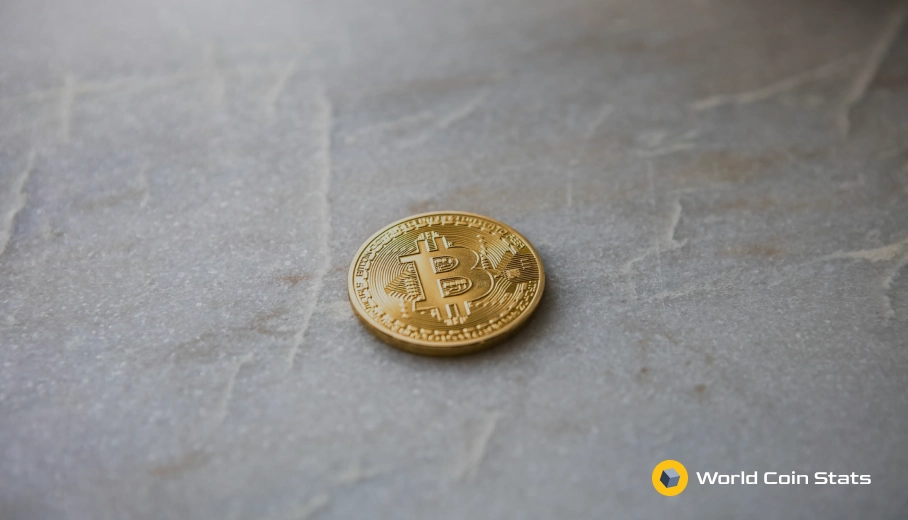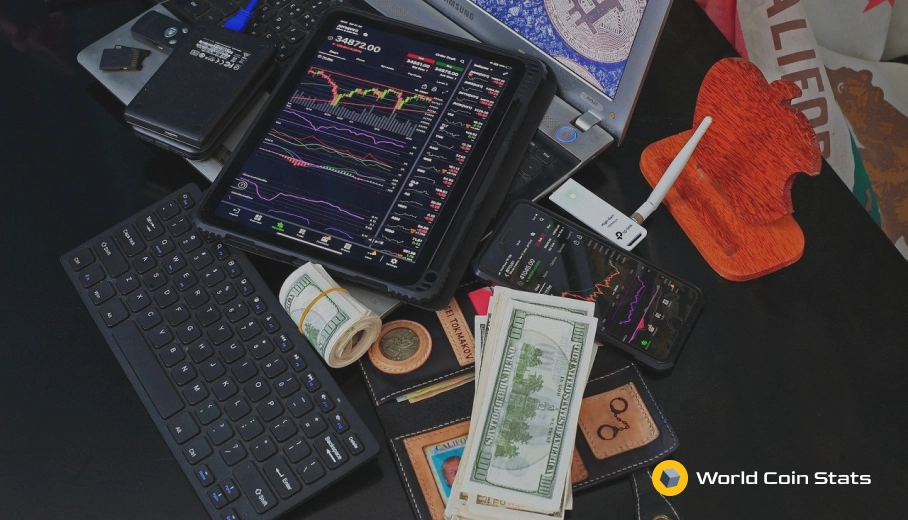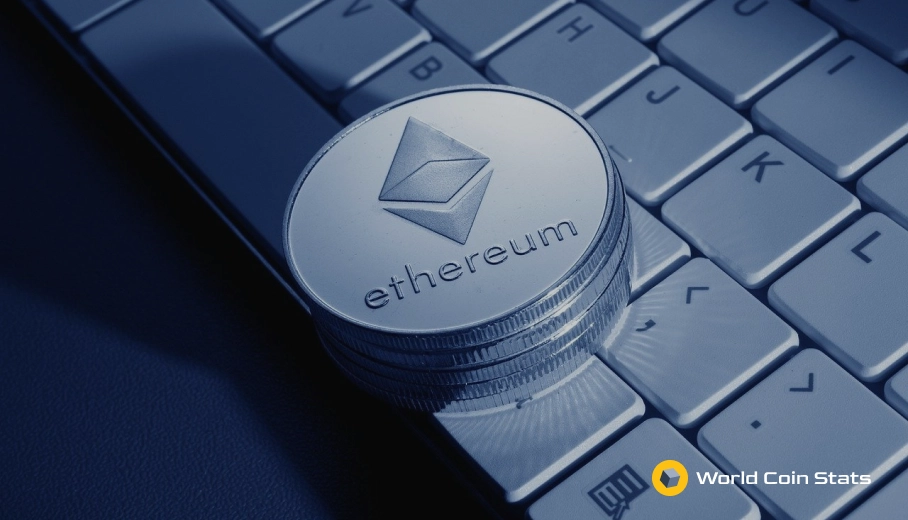What is the next step Bitcoin is taking?
Bitcoin has seen a massive transition of its utility over the past 12 years of its existence. It started out as a cryptographic experiment, turned into digital money, turned into a store of money, and has turned into a digital version of gold in its present state.
Of course, the technology is constantly evolving and has begun taking on a new form. This article will explain the next step that Bitcoin is taking in its evolution as the number one cryptocurrency by market cap.
Bitcoin’s Early Days as a Currency
As mentioned earlier, Bitcoin has had a lot of different uses over the past 12 years. It originally started out as a way to digitally send money on a decentralized ledger (ie. blockchain) without having a double spend.
It accomplished that goal and quickly became the de facto currency of online criminals and scammers. This lasted for a while until people realized that Bitcoin really is not a very good anonymous currency because the entire blockchain that includes wallet addresses, transactions, and transactions is public and immutable.
This made it extremely simple for law enforcement to trace illicit funds across the blockchain unless expensive bitcoin mixing services were used to obfuscate the path of the tainted bitcoin. Bitcoin mixing services had a few problems: they were expensive, not guaranteed to be successful at anonymizing bitcoin, and many mixing services were full-on scams that simply did not return bitcoin deposited to them.
The release of Monero in 2017 caused an almost immediate decline in the use of Bitcoin as an online currency. This was because, for better or worse, Bitcoin had become the de facto currency for a wide variety of online criminals from Nigerian email scammers to ransomware hackers to credit card scammers.
Monero’s privacy focus meant it was impossible for anyone to track transactions on it’s blockchain. Criminals flocked to it and the main use of Bitcoin – as a digital currency for criminals – mostly dried up.
Now, when one door closes, another opens. And a huge door opened in 2017 when Bitcoin’s price surged from a few hundred dollars to around $3,000 and then launched to nearly $20,000.
This growth was mostly driven by retail investors buying into Bitcoin as an investment. They were not buying it because they were tech nerds or online criminals. These were simply regular people that wanted a piece of something that increased from basically worthless in 2009 to thousands of dollars in a span of 8 years.
This brings us to the current narrative surrounding Bitcoin in 2021.
Bitcoin as “Digital Gold”
The similarities between Bitcoin and gold are numerous. They are so numerous, in fact, that many have speculated that Bitcoin was originally designed with the intention of becoming a sort of digital gold.
Anyway, here are the similarities between Bitcoin and gold:
- Bitcoin has a finite supply.
- A certain amount of Bitcoin is added to the market each year.
- It is fungible.
- It is divisible.
Those are some very basic similarities between the two. The reality is that Bitcoin is actually better than gold because Bitcoin is easier to purchase, own, store, and trade. The predictable supply pattern and inability to counterfeit also make Bitcoin superior to gold.
Anyway, this digital gold narrative about Bitcoin really took off at the end of 2020 when Bitcoin was beginning to enter its bull market. This was pushed by people like MicroStrategy CEO Michael Saylor after his company purchased billions of dollars worth of Bitcoin.
To summarize, Bitcoin is currently viewed by the vast majority of its holders as a form of digital gold. This is slowly changing, however, due to the growing popularity of Bitcoin layer 2s and growing acceptance of it around the world.
Bitcoin as a Currency
We covered how Bitcoin was used as a currency in its early days. This involved sending bitcoin directly to another address, which took a little bit to fully confirm and was expensive when mining fees on the blockchain increased.
Not much has changed in that regard – the blockchain is still a little slow and mining fees can surge in price during congestion, which makes using Bitcoin as a currency a little impractical because paying $2.00 for a $3.00 purchase isn’t practical.
What has changed is the popularity of layer 2 Bitcoin solutions. These solutions are essentially a second blockchain on top of the Bitcoin blockchain. The layer 2 protocols have their own nodes to facilitate transactions. That makes them a little less decentralized than Bitcoin, but it does greatly reduce the transaction fees and increase the transactions per second.
This has led to an increase in people using Bitcoin to pay for small transactions that were not practical to pay for using the Bitcoin mainnet. It might not be as noticeable in places like the United States or Western Europe, but communities within countries with weak currencies have begun using Bitcoin for transactions. And they are not using the Bitcoin mainnet for transactions.
The most famous Bitcoin community is, of course, El Zonte, El Salvador (Bitcoin Beach). The surf town in El Salvador adopted Bitcoin as its de facto currency after receiving a large endowment from an anonymous benefactor.
Countries with currencies that are hyperinflating have also seen Bitcoin become an alternative currency. These countries include Iran, Argentina, and Venezuela.
Now, these stories are great and show the evolution of Bitcoin. But the real bombshell story of 2021 is that El Salvador made Bitcoin legal tender.
El Salvador Makes Bitcoin Legal Tender
El Salvador made Bitcoin legal tender in September. This was done because remittances from citizens working in the United States make up nearly 20% of the country’s GDP.
Most of those remittances are sent with wire transfer companies like Western Union and MoneyGram. The fees are outrageous when compared to transferring with a layer 2 Bitcoin solution.
That is the given reason why El Salvador made the switch, which is great but probably does not tell the full picture.
The real reason likely has to do with El Salvador not having a national currency and being at the whims of the United States Federal Reserve monetary policy. The Federal Reserve’s monetary policy has become increasingly crazier since COVID-19 with the US printing nearly 30% of the existing money supply in two years.
Inflation, and likely hyperinflation, will hit the United States Dollar hard at some point in the next few years. Countries that rely on the USD as their currency probably do not want to face that type of scenario because it is much more difficult to control.
El Salvador had foresight and made the switch to Bitcoin earlier than any other country. Fortunately, other countries like Brazil and Ukraine are having talks about making the switch to accepting Bitcoin as legal tender.
This brings us to the next step that Bitcoin will take as a project. It’s a step that many have discussed at the inception that sort of died out as the challenges with it seemed almost too large to surpass.
Bitcoin as a World Currency
Yes, the next step for Bitcoin is to become a world currency. It is already there in a practical sense because anyone with an internet connection and some Bitcoin can send it to any address for a transaction fee (no conversion fees, middlemen, etc.).
It is a country agnostic currency, so it does make sense that it could become a world currency.
It makes more sense when more countries start making Bitcoin legal tender. At the moment only El Salvador has it as legal tender.
However, if Ukraine, El Salvador, and Brazil all have Bitcoin as legal tender, then Bitcoin is three countries closer to becoming an official world currency. It would mean that a Bitcoin holder could travel from El Salvador to Ukraine without having to convert any money, pay foreign transaction fees, or visit an ATM.
All the money they need would be free to use in their Bitcoin layer 2 wallet.
So, will Bitcoin be able to make this next step as a world currency?
Yes, more countries will begin accepting it as a currency, which will make it easier to conduct business between those countries. Admittedly, the chances of every country making it legal tender are slim to none.
Fortunately, Bitcoin does not need every country in the world to make it a legal tender. All it takes is a few countries to make Bitcoin a legitimate currency in the eyes of financial institutions and world governments.
Closing Thoughts
That covers it for the next step Bitcoin is taking in its evolution as a project. It started as an interesting cryptographic project that turned into a currency used by criminals. From that it evolved into one of the best performing assets of all time in terms of returns.
Many people still view it as an investment because the returns on Bitcoin have continued to be phenomenal.
However, Bitcoin has bigger plans than that and is slowly turning into a currency that regular people, not criminals, can actually use for everyday transactions. It has even become legal tender in one country with more countries likely to make it legal tender in the future.
The future of Bitcoin is extremely bright with all of the mainstream adoption it has received over the past few years. It will most likely continue as one of the best long term holds in portfolios for years to come with all the positive developments for the blockchain project.




